This is an Agat 18K half-frame 35mm camera made by BelOMO in their Vilejka factory near Minsk, Belarus between the years of 1988 and 1991. The Agat 18K was an updated model of the earlier Agat 18 offering an improved shutter, a new film speed scale, and a revised lens cap which protects the shutter release. Although made almost entirely of plastic and sold at a price targeted towards children and students, the feature set of the camera was quite ambitious, offering almost every feature that a serious photographer might need including a capable all glass Industar 4-element lens.
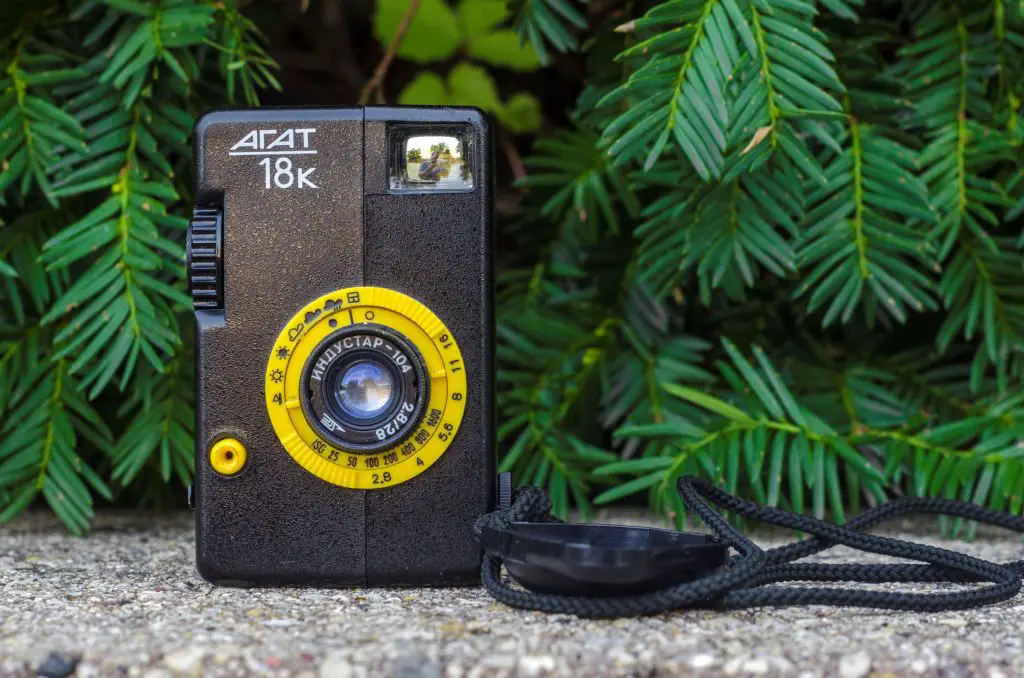 Film Type: 135 (35mm) 18mm x 24mm Half Frame
Film Type: 135 (35mm) 18mm x 24mm Half Frame
Lens: 28mm f/2.8 Industar-104 coated 4-elements
Focus: 0.9 meters to Infinity
Viewfinder: Scale Focus with 28mm Projected Brightlines
Shutter: Two-Blade Metal Leaf
Speeds: 1/65 – 1/540 seconds (I have serious doubts this is accurate, but its what the manual says)
Exposure Meter: None
Battery: None
Flash Mount: Flash Hotshoe
Weight: 119 grams
Manual (in Russian): https://mikeeckman.com/media/Agat18kManual.pdf
My Final WordHow these ratings work |
The Agat 18K is easy to dismiss. It’s an all plastic bodied half frame camera made in the Soviet Union in the 1980s with an odd design, questionable quality control, and uninspiring specs. For me, it’s perceived weaknesses are it’s greatest strength as the Agat 18K (and likely it’s predecessor) is surprisingly capable and fun to use. I was impressed with the image quality of the negatives and found it’s simple design to be an asset, rather than a liability. Of the cameras I’ve reviewed on this site, this one ranks up there as one of my biggest surprises. I can’t want to take it out again! Highly recommended. | ||||||
| Images | Handling | Features | Viewfinder | Feel & Beauty | History | Age | |
| 1 | 2 | 1 | 1 | 1 | 0 | 0% | |
| Bonus | +1 for indescribable cool factor, you’ll never know how great this camera is until after you try it | ||||||
| Final Score | 7.0 | ||||||
History
The Agat 18K and it’s predecessor, the Agat 18 were made by an optical organization called Belorusskoe Optiko-Mechanichesckoye Obyedinenie (Belarus Optical & Mechanical Association in English), or BelOMO for short. BelOMO didn’t actually make the cameras themselves, they were more like the managing organization of two Belorussian optics factories that had existed in the area around Minsk, Belarus in the 1950s and 60s.
After World War II, the Soviet Union claimed a lot of German optics technology from companies like Zeiss-Ikon, KW, and many others as war reparations. Many of the machinery and workers from those factories were brought to Soviet factories in Moscow and Kiev to build up the Soviet Union’s optics industry. Soviet made FEDs, Zorkis, and Zenits were extremely popular and rolled off the assembly line as fast as they could be made.

In 1957, a new factory was built in the capital city of Minsk, in the Soviet country Belarus. The factory was called Minskiy Mechanicheskiy Zavod (MMZ) or Минского Механического Завода in Russian, and originally helped supplement other Soviet factories like GOMZ by making various optics machinery used by other factories. By the early 1960s, MMZ started manufacturing cameras under a variety of different brands such as the Chaika (Чайка), Smena-M (Смена-М), Vesna (Весна), and a few others. Unlike the high end rangefinder and SLR cameras that were built by KMZ and FED, most MMZ cameras were inexpensive scale focus only cameras.

12 years later, another factory was built in a small town called Vilejka which is about 100km outside of Minsk to further supplement the booming Soviet optics industry. This new factory was called Vileiskiy Zavod Zenit or Вилейка завод Зени́т in Russian and was a joint effort between MMZ and KMZ and it’s primary purpose was to help produce the very popular Zenit SLR camera. The Zenit was one of the best selling cameras in the Soviet Union at the time and production demands required the capacity of the new Vilejka factory.
In 1971, the Soviet government decided to consolidate it’s optics industries and merged the ownership of MMZ with Vilejka to form BelOMO. Both factories would continue to manufacture photographic products, but under a single unified brand.
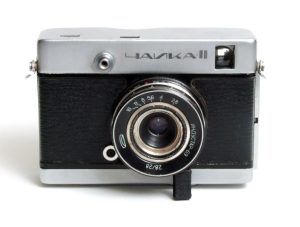
Under the BelOMO name, the company produced the Industar-69 lens, the Chaika half frame, and Orion full frame point and shoot cameras, and then starting in 1983, the Agat 18 (Агат-18). The earliest examples of the Agat 18 in 1983 were built at the MMZ factory, but shortly after were switched over to Vilejka where it remained until the end of the Agat 18K production. You can tell where your Agat was built by looking at the logo on the front of the lens.
The ’18’ in the name Agat-18 signified the camera’s half frame 18mm x 24mm images. Half frame cameras had a surge of popularity all over the world in the 1960s with the introduction of the Olympus Pen series, but by the end of that decade, enthusiasm had dwindled in all but the Japanese market.
Perhaps in an effort to increase interest in photography, the Agat’s choice as a half frame camera allowed potential customers to get twice as many shots on a roll of film that they otherwise would get.
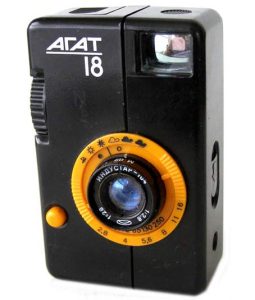
Keeping true to the ‘economy’ status of the camera, nearly everything was made of plastic to keep costs low. Unlike many other half-frame 35mm cameras where the film transports horizontally, creating images in a default portrait orientation, the Agat-18 was designed to have the film travel vertically, meaning the default orientation was landscape, just like a normal “full frame” 35mm camera.
The formula worked as the Agat 18, and the later 18K were in production from 1983 all the way to the collapse of the Soviet Union in 1991. In total, over 580,000 were sold making it one of the more popular Soviet cameras of the 1980s.
The Agat 18K was mostly the same model with only subtle changes to the shutter, a revised lens cap that protected the shutter release button when not in use, and a change from an ASA film scale to the ISO international standard.
While most Agats came in a black plastic body with yellow shutter disc and release button, there were variants with red and orange shutter discs, and bodies in black and gray but all of these are quite rare.
Both the Agat and Agat 18K were marketed towards children and students, and the price of 19 roubles reflected the target audience. According to an expert on Soviet cameras, the correct conversion ratio from roubles to US dollars in 1987 says that 19 roubles was equivalent to $31.66. Then by using the Consumer Price Index’s inflation calculator, that is equivalent to $68.58 today.

The vast majority of Agat’s were sold in the Soviet Union, but a very small number were created for export. Export versions of the Agat have all text on the camera using English letters. These are very rare and quite collectible.
Today, the Agat 18 and Agat 18K have a small following among enthusiasts. Even in good working condition, the body creaks, is susceptible to light leaks, film transport can be rough, and sometimes the shutter decides it doesn’t want to fire. These characteristics likely scare some collectors away, but still, the camera has it’s charms. For one, it looks like no other camera ever made by anyone. The camera has an ambitious design with features that aren’t immediately obvious, and when you actually take the time to shoot one, the images they produce are quite good.
My Thoughts
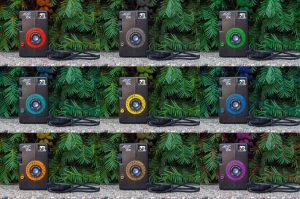
The Agats 18 and 18K are very unique looking cameras, both in it’s size, and its unique yellow and black body. I had seen them for sale now and then, but knowing the camera’s sketchy reputation for reliability and my unwillingness to pay the prices to have one imported from Russia or some other European country, I never pulled the trigger.
Thankfully, my friend Adam did the work for me and picked up this nice Agat 18K and upon learning not only that it worked, but it made pretty nice pics, I asked if I could borrow it and like the good friend he is, he sent it my way.
It’s not often I get a camera that’s been confirmed to be in good working condition from someone I trust, so I quickly loaded some film into the camera and went shooting…
…that was my first mistake.
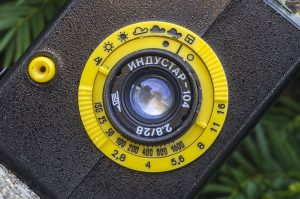
The Agat 18K is unique in many ways more than it’s design. BelOMO made the camera’s design very ambitious with many features that you wouldn’t expect to find on an economy camera, but also might not even know are there unless you know what to look for.
The shutter release button has a hole in the center and is threaded for a shutter release cable if you wanted to shoot at the camera’s slowest shutter speed. Slow shutter speed usually require some kind of stabilization like a tripod mount, but the Agat doesn’t seem to have one. Or does it? It turns out that a tripod socket is one of those features that’s not quite obvious, because it also doubles as the attachment point for the lens cap cord. Unscrew the little ring where the cord attaches to the camera, and there is a standard 1/4″ tripod socket.
Perhaps the most notable feature is the exposure control system which requires a bit of explanation. You don’t ever directly control the aperture or shutter speeds of the camera. There is a coupled exposure ring around the lens with f/stops from 2.8 to 16 on one side, and then 7 icons starting with a picture of a sailboat on one side and a window on the other.
At this point, most collectors would venture over to Mike Butkus’s camera manual site and look up the manual for the camera and learn how it works. No manual? Okay. For as amazing as Mike’s site is, he doesn’t have everything. A quick Google search should produce the manual, right? Well, not unless you speak Russian.
The Agat was almost exclusively sold in the Soviet Union upon it’s release. There was an export version at one point, but it was very rare and I don’t think any English language manuals have ever made it online, if they existed at all. For non-Russian speakers like myself, your options are either to just figure it out, or use the experiences of others, which is what I did.
For starters, the Agat is a completely mechanical camera with no meter and no type of automatic exposure, but it does have a shutter with a mechanical programmed exposure system which couples the shutter speed to that yellow ring around the lens.
To get properly exposed images, you must first set your film speed by rotating the inner ring around the lens and lining it up with a little white notch in the black ring. On the Agat 18K, this ring shows ISO film speeds from 25 to 1600. On the original Agat, your choices are ASA 16 – 250. On the Agat 18K I had for this review, this ring was very difficult to turn and required a lot of finger pressure to get it to rotate. I have heard other reviewers mention this same thing, so its possible that others are the same way.

After selecting an appropriate film speed, you rotate the outer ring, which thankfully was a little easier to turn, and align one of the 7 icons with the black line at the top of the inner ring (it’s the line in between the dark and light circle). Each of the 7 icons represent different lighting situations that the camera will use to select a predetermined shutter speed and f/stop. The manual describes the 7 symbols in Russian, so the image to the right is my attempt at translating what each symbol means. For those of you who are familiar with the Sunny 16 rule, this is practically the same thing.
Although f/stop numbers are written on the bottom of the outer ring, they are only there for reference and you do not directly control them. There is also no mention at all of shutter speed. Thankfully, even without speaking Russian, you can get a general idea of the correct shutter speeds in the Russian language manual.
The table below represents the pre-programmed shutter speeds and f/stops the camera will use at each of the indicated f/stops on the yellow ring. Remember that you do not control the shutter speed or aperture directly. You choose one of the 7 symbols mentioned above that corresponds to the lighting in whcih you are about to compose your picture. Depending on that setting, and what you previously chose as your film speed, the camera sets the values below.
The asterisk at the bottom of the chart says that these values are not indicated on the camera, which suggests that in between values are allowed. The programmed shutter speed and aperture selections in the camera must be infinitely variable. I must say that I do find it rather humorous that BelOMO was so specific in these settings. I don’t think any camera maker, even on their best day, can consistently get a shutter to fire at some of these speeds like 1/169th or 1/417th of a second! Even modern DSLRs with electronic shutters still have a margin of error of a few percentage points making this accurate of a setting impossible.
At the top of the yellow ring are two circles, a dark and light one that allow you to set +/- exposure settings. If you want a +1 EV for backlit photos, you set the camera the same way as before, except instead of lining up your selected icon with the black line, you line it up with the light (hollow) circle. If you want -1 EV, then do the opposite and line up your selected icon with the dark circle.
This likely sounds very complicated, but in practice it’s actually pretty straightforward. I give the designers of the Agat a lot of credit for coming up with a pretty flexible exposure system using a couple of plastic rings and an entirely mechanical camera.
Moving onto another easy to miss feature, the depth of field scale which you’d be forgiven for never knowing was there.
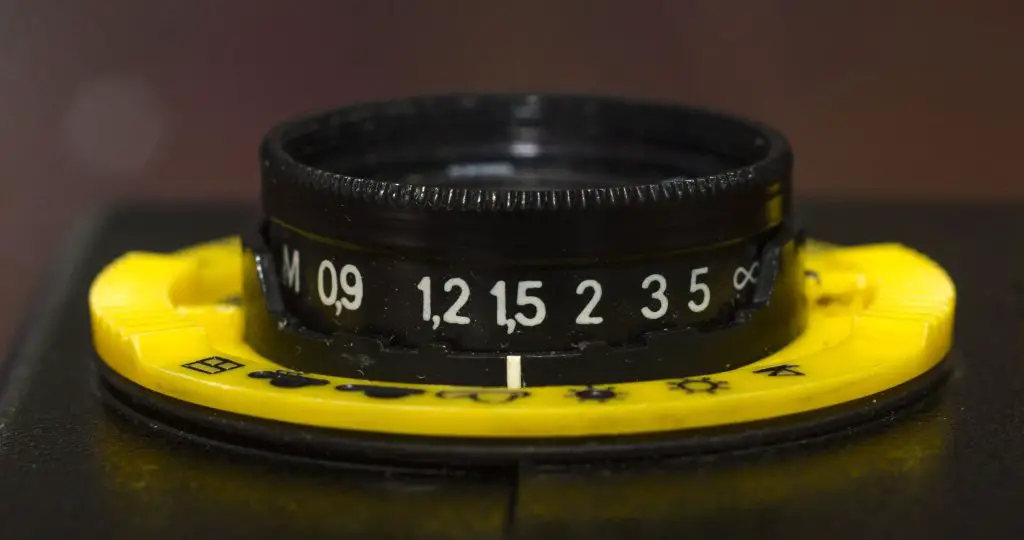 Thankfully, the Russian language manual has this graphic which spells out how it works.
Thankfully, the Russian language manual has this graphic which spells out how it works.
 As it turns out, those little ridges on the plastic ring beneath the focus distances are depth of field markings for 5 different f/stops from 2.8 to 11. The manual doesn’t mention f/16 as apparently, at that size, the entire range of the camera will be in focus.
As it turns out, those little ridges on the plastic ring beneath the focus distances are depth of field markings for 5 different f/stops from 2.8 to 11. The manual doesn’t mention f/16 as apparently, at that size, the entire range of the camera will be in focus.
In the example above, the camera is set to 1.5m and each ridge represents the depth of field range that will be in focus at various f/stops. At f/4, everything from slightly closer than 1.2 meters all the way to maybe 2.33 meters will be in focus. At f/5.6, everything from probably 1.0 meter to 3.0 meters will, and at f/8 everything from 0.9 meters all the way to 5 meters will be in focus. Amazingly though, at f/11, the camera turns into a fixed focus camera where everything from “M” which I assume means minimum focus to infinity within the depth of field. This seems awfully optimistic, but hey, what do I know?!
I applaud the designers for adding this feature to the camera, but I would be willing to guess that of the people who knew the feature existed in the first place, very few of them actually used it as the markings are not only very hard to see, but the distances between the numbers are so imprecise. I’m not sure this scale is any more accurate than if you were to just guess.
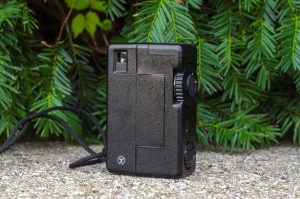
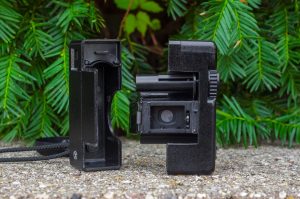
Loading film into the camera is a bit of an adventure too. For one, the camera splits right down the middle and separates into two complete halves.
Film is loaded in the bottom compartment of the shutter side and stretched across the film gate and attached to the removable take up spool. When I first got this camera, I didn’t realize that the take up spool was removable. It wobbled around quite a bit until I twisted it and it came off. It turns out that the proper way to install the take up spool is to rotate it clockwise while pushing down on it until it won’t rotate any further. There are locks that stop it from turning when it is properly installed. If you find your take up spool in your Agat is really wobbly, it might not be installed correctly. Finally, there is a hinged pressure plate that must be swung out of the way before stretching the film across the film gate that must be swung back before closing the camera.
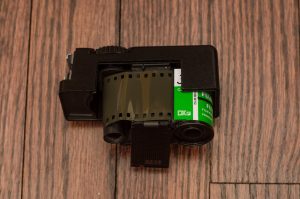
Closing the camera requires careful alignment of the two halves of the camera while making sure the pressure plate remains folded shut, that the film cassette or take up spool do not fall out, and that everything between the two halves line up perfectly. The tolerances on the Agat are quite tight, and the all plastic body does not inspire confidence when you hear the creaks and groans of the plastic as you try to gently, but firmly press the two halves together. If you did it correctly, the camera will snap together as it was before and the seam down the middle should remain light tight. I have heard of some people putting tape over the center seam for additional light protection, but I didn’t do that myself.
With the camera together, it is time to advance the film to get to your first exposure. On most half frame cameras, you would normally fire off 3-4 blank exposures before settling on your first exposure, but with the Agat, the film gate is so close to the tip of the cassette, 1 blank exposure is probably enough, but I did 2. This is one way in which the Agat is an economical camera. With a 12 exposure roll, most half frame cameras will get you 24 exposures, but with the very short distance the film travels off the spool, you can very easily get 28 exposures on a 12 exposure roll.
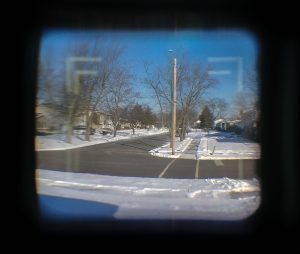
The viewfinder is in a default landscape orientation unlike most half frame cameras that are in a default portrait orientation which is nice because you can shoot the camera like any other full frame 35mm camera without having to remember to rotate the camera to get “normal” shots. The viewfinder is also surprisingly large and bright with projected frame lines for the 28mm frame, with parallax marks for close focus, but nothing else. There are no focus or exposure needles, LEDs, or any other type of indicator as to what the camera is doing. Taking into consideration the Agat’s stance as an inexpensive camera for the common person, I found the lack of any other information in the viewfinder to be acceptable.
The Agat 18K turns out to be a pretty well rounded camera that despite it’s inexpensive price and mostly plastic build has quite a lot of features. If only it had a flash socket. Wait a minute, whats this little panel near the bottom corner of the camera? A hot shoe?!
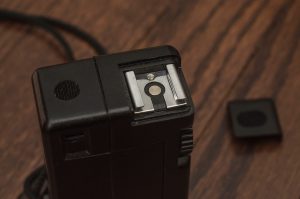
Yep, the Agat 18K even has a flash hot shoe which is synced at all speeds. I actually tried to use the hot shoe with one of my many SLR flashes and could never get it to fit. It turns out that in order to hide the shoe under a plastic plate meant that it had to be recessed into the body of the camera which impedes both of the Nikon and Canon Speedlites that I have. So although I didn’t get a chance to try out the flash on this camera, I have to laugh at how goofy the camera must look connected to a big ole flash like my SB-600!
Overall, the Agat 18K is quite a capable little camera with pretty much every feature that a significantly more expensive camera might have. If you consider this camera was sold at a price that today is equivalent to about $70, you have a camera with a very decent glass 3-element lens, a mechanical programmed exposure system, a bright and easy to use viewfinder, flash hot shoe that’s synced at all speeds, depth of field scale, tripod mount, and a threaded shutter release cable, which together make for a very capable little camera.
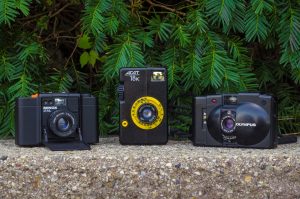
Perhaps it’s biggest asset is it’s size. Weighing in at a mere 119 grams without film loaded, and no larger than a pack of cigarettes, this is the smallest and lightest weight camera of any I’ve reviewed. The image to the left compares the Agat to two other very compact cameras from the 1980s, the Minox 35ML and Olympus XA2. This is a camera that you can stick in your front jeans or shirt pocket and forget it’s there. Although it lacks any sort of electronic metering like the other two cameras in the pic, the mechanical programmed exposure settings are quite easy to use and nearly as effective making for a compelling everyday camera that can be shot at a moments notice.
With it’s best attribute being it’s small size and light weight, the Agat 18K is clearly a very good portable camera, but is it actually a good camera?
My Results
I loaded in a 12 exposure roll of expired Fuji Superia 100 and took the Agat with me around Halloween to a nearby pumpkin patch. After arriving, I was able to fire off 2 shots before the camera stopped working. Dismayed, I texted my friend Adam who lent me the camera and he said that happens sometimes and you just need to fiddle with it to get it working again.
My version of fiddling with a camera usually involves banging it around on something, but this being a loaner, I decided to just put it back in the bag and take it back home. I rewound the film back into the cassette, opened the camera, checked that nothing was broken, and reloaded the cassette back into the camera, fired off the shutter a few times to get past the first two exposures I made and took it with me the next weekend to visit my in-laws in upper Michigan.
It seems the Agat 18K follows in the tradition of so many Soviet cameras that are always better than people give them credit for. Despite its nearly all plastic build and very low price, the Industar-104 is quite capable. These images remind me of those shot on another half-frame 35mm camera, the Universal Mercury II. Although the two cameras were made four decades apart on opposite sides of the world, they each used a quality glass lens, had a very unique and ambitious design, and both made images that look quite a bit alike.
Despite having half as much area to scan in, the images don’t quite look like they have half the detail. In fact, there’s still enough detail here that I would be comfortable printing an 8×10 of, but no larger. These images would have likely looked indistinguishable at 4×6 from a full frame 35mm camera. Of course with a lesser lens than the Industar, the images likely wouldn’t have turned out nice.
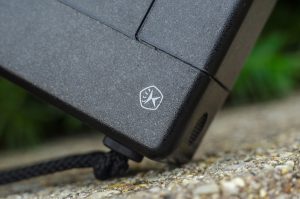
The Agat 18K (and most likely the original Agat 18) is an oddity in the history of Soviet camera design. A large number of Soviet cameras were based off, or direct copies of existing designs. FEDs, Zorkis, Kievs, and Moskvas, all owe their designs to someone else. For the cameras that were original designs, most were unremarkable scale focus cameras. Of the few that were ambitious, the Starts, Leningrads, and Horizonts, these all seemed to come at an earlier time when the Soviet optics industry was in full swing.
The Agat debuted in the early 1980s, a time when there was little innovation left in the Soviet optics industry. Most of the legacy cameras were on their last legs with quality control beyond bad, yet here was this all new model, made entirely out of plastic, selling for today’s equivalent of $70 that had an ambitious feature set and an excellent lens that produced really nice shots. This is all the more impressive that by the time the 18K variant came out, the Soviet Union was less than 5 years away from total collapse.
If you have an opportunity to try out an Agat, definitely take it. Try not to let any preconceived notions of what a late Soviet plastic camera can do and just load a roll of film it and give it a chance. I would be willing to bet, you’ll be impressed!
Related Posts You Might Enjoy
External Links
http://camerapedia.wikia.com/wiki/Agat_18K
http://www.sovietcams.com/index.php?-985651710
http://photo-analogue.blogspot.com/2015/12/belomo-agat-18k.html
http://ilovetoxicwastephotography.blogspot.com/2013/03/review-agat-18k.html
https://www.lomography.com/magazine/123858-belomo-agat-18k-tiny-russian-plastic-camera

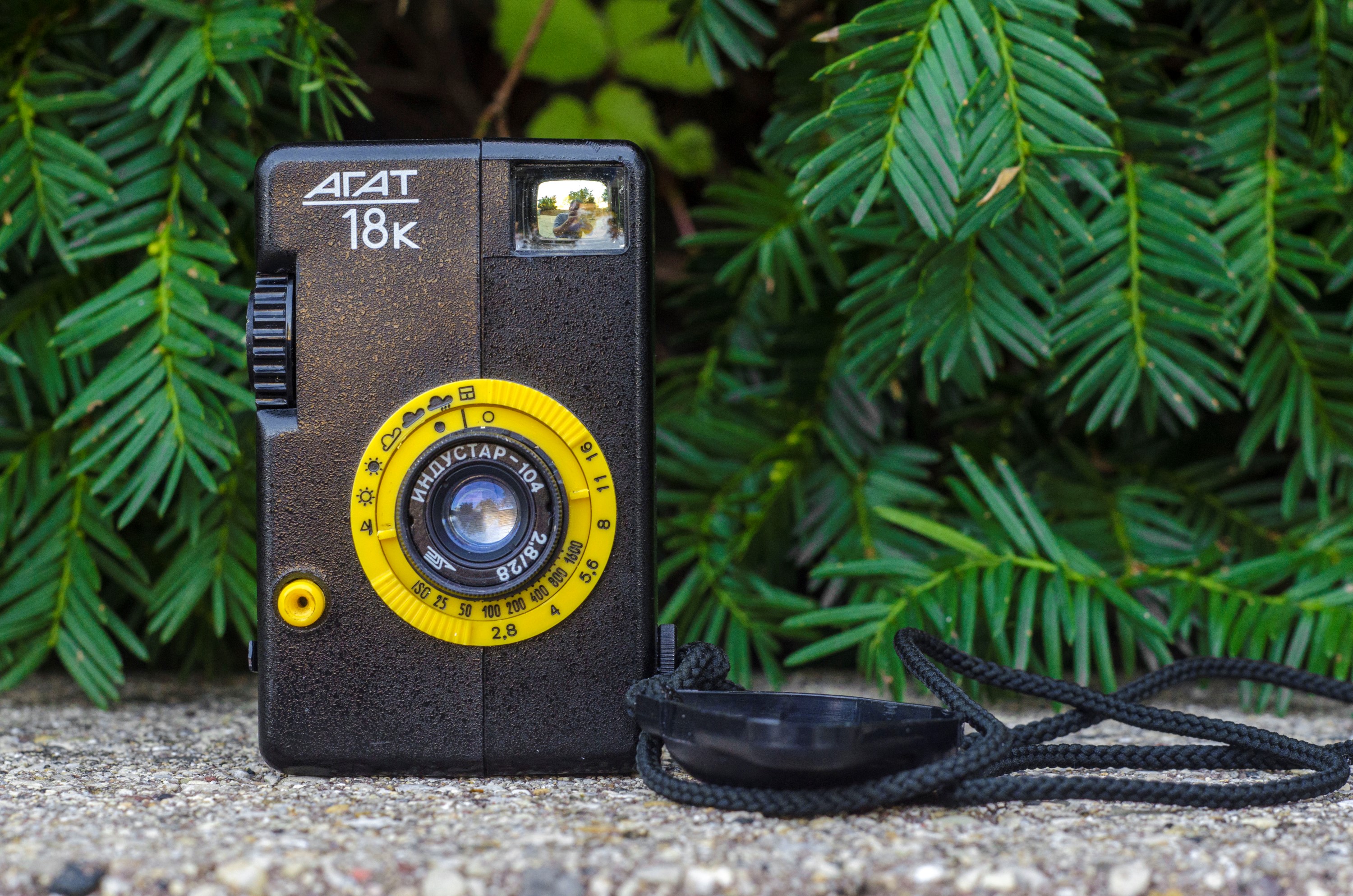
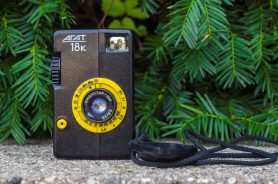
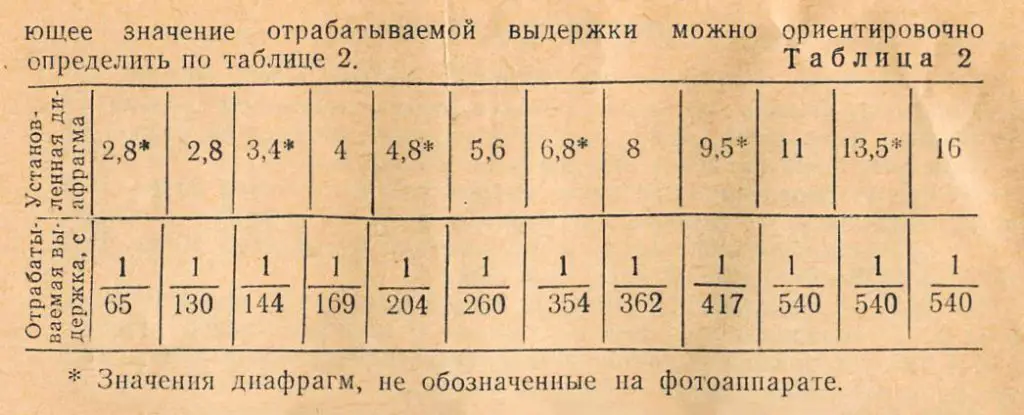












Very nice review… but one innacuracy (or isn’t it?). When you describe the shutter release button you suggest that the release cable can be used in case one wants to shoot in Bulb mode…. except the camera does not have the Bulb mode (or does it?)…
You got me! I assumed the threaded release was for Bulb mode, but upon further review, I don’t see anyway to set the shutter to stay open. I guess the threaded release is to be used remotely? I doubt many people used the Agats in this manner though. I have updated the review!
I guess it can also be used for selfies – put the camera on a tripod and use the release cable! This way 0.9m (min focusing distance) is just about right to have yourself in focus with the help of the release cable.
You could connect self-timer (mechanical) to the thread in the button and thus make a selfie. Such attachable self-timers were popular in 50-60s and could be found until now, some are cheap and simple.
I have Agat-18 and like it a lot, mainly due to size and some specific feeling of reality it produces on pictures, don’t know how to say it differently.
Mike, there you go! Was perusing your latest reviews (that Vivitar one was the first I’ve bothered to comment on) and noticed this one. Yes! My reaction exactly to this tiny, weird, little wonder. I picked one of these up as nothing but an add-on to a lens purchased online from a Slovenian camera tech about 3 or 4 years ago… and it blew me away. I use this thing without fail every summer – it’s so ridiculously tiny and care-free. I often give it over to my very young niece and nephew to use with hand-rolled B&W so they’ll not pester me asking to use other cameras I dare *not* hand over to them. But the truth is, I enjoy it as much as they do! That little Industar is a bit of magic trapped in a bumblebee-colored plastic fantastic. I adore this little guy.
You’re definitely right about that! On paper, everything points to the Agat being a throwaway plastic piece of junk, but as soon as you load some film into it and give it a chance, it endears itself to you quickly and the images it makes are quite good! I thoroughly enjoyed mine and look forward to shooting it again!
Hi, a small info needed: like its other siblings, the industar 104 is not a triplet, but actually a Tessar equivalent (4 elements in 3 groups).
Two sites that are worth it: https://camerapedia.fandom.com/wiki/Industar, and another one in russian, (feel free to google translate it): http://www.photohistory.ru/1302589593130459.html.
This little Agat is a hidden gem!
Hi there, thanks for the email regarding the Industar on the 18K.
I know many Industars are 4 elements, are you sure that all of them are? The Industar page you link to does not mention the 104. Furthermore, Camerapedia’s page on the Agat 18 (https://camerapedia.fandom.com/wiki/Agat_18K) and Aidas Pikiotas’s Sovietcams page (http://www.sovietcams.com/index.php?-85530616) both list it as a triplet.
Do you have any other sources?
Hi Mike,
As per lens types, the zenit camera site is a goldmine:http://www.zenitcamera.com/archive/history/marks.html check for Индустар.
The name Industar was used for Tessar-type lenses (though exceptions might haved existed, but I’m not aware of them. I’ve had to clean a slight internal haze in my Индустар-104, and noticed the cemented rear elements, which confirms it being a 4 elements lens.).
If you have a glance at Dr. Donau’s website (http://baierfoto.de/russobj/objektive/industar.html), you’ll see the Индустар 69, which is the 104 older sister. The И-69 was used on Chaikas, the previous half-frame camera range from Belomo, It migh be plausible, that the 104 is a recalculated 69, like the Индустар 50 is a recalculated 22 (check on zenit camera page).
On another hand, Jupiters were just Sonnar types but that name was given to lenses independently of the number of lens elements: Jupiter 3 (7 elements), Jupiter 8 (6 elements), Jupiter 11 (4 elements).
Mir lenses was a name given to wide angle lenses, but not linked to the lens constructions (Mir-1 and Mir-20 are worlds apart).
I don’t consider wikipedia as a source per se, but they do have infos on industars that are worth reading. https://ru.wikipedia.org/wiki/%D0%98%D0%BD%D0%B4%D1%83%D1%81%D1%82%D0%B0%D1%80
Russian triplets are labelled Триплет :-). In fact, they are just labelled T-something, like T-22 (the 75mm on a Lubitel) T-43 for the 40mm on Smenas, or T-69 on Siluet Elektros and Vilias; the zenit camera site also has also an entry for this lens type, just like the russian wiki does.
I hope you’ll enjoy the (long) reading.
Have a great day.
You have convinced me. I updated the review indicating it’s a 4-element lens!
I just received one in the post from Belarus!! Your article was very informative. I cannot wait to go out and shoot with it. Although, being a medium format shooter I may have a hard time getting through 48 or 72 shots on one outting 🙂
Good luck! I think you will be pleasantly surprised, but definitely do yourself a favor and load in a 12 exposure roll if you have one, or a 24 at the very most. A 36 exposure cassette in a half frame camera is suicide! 🙂
Thank you for the article, it brought back memories of my first camera 🙂 As for the inner (sensivity) ring being hard to move, I’ve always thought it was on purpose – it would be a pity to shoot 72 frames just to find out, that the ring was accidentally moved and all of these are badly exposed…